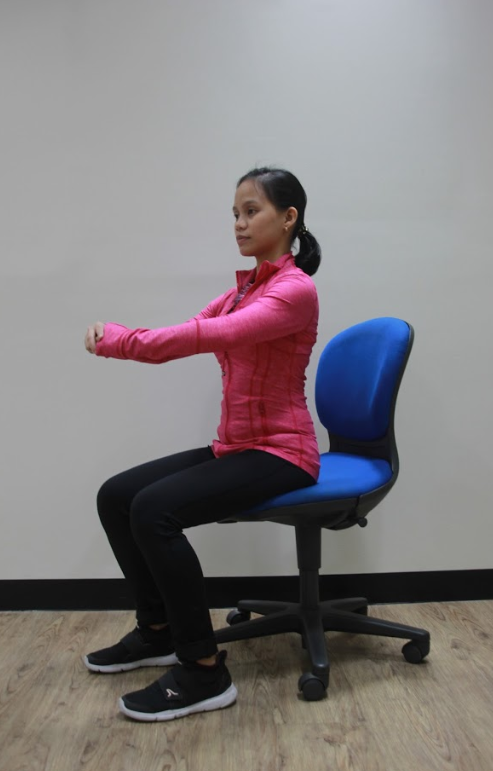MOVE WELL EXERCISES
August 30, 2019
Strengthen Your Core
A strong core is essential to achieving overall fitness and health.
The core muscles are not just the abdominal muscles but also include the muscles of the hips,lower back, pelvic floor and even the diaphragm (the main muscle involved in breathing).
These muscles support the entire body and keep us upright, stable and steady on our feet while doing daily activities ranging from walking, sitting at our desk, bending over, reaching and lifting to running, dancing, exercising and playing sports.
Weak core muscles can result in poor posture, lower back pain and increase the risk of injury to the back, hips, knees and shoulders.
Core exercises train the muscles in the pelvis, lower back, hips and abdomen to work in harmony. A strong core improves posture, allows us to do physical activities with ease, and results in a trim and toned waistline.
Core exercises do not require any special equipment or a trip to the gym. Below are some starter exercises that you can do even at the office using a mat or towel for the floor exercises.
For all the exercises to be effective the key is to make sure that your position and form are correct.
Front Plank on Desk. Planking not only helps core conditioning but also improves balance and posture. Place your forearms on the edge of your desk or any hard flat surface. Slowly, extend your feet backward until you create a straight line. Hold the position for as long as you can and slowly increase to 20-30 seconds as you get stronger.
Chair Stand. Regular chair stands can strengthen your abdomen and thighs. Start by sitting upright on a chair with your knees bent and feet flat on the floor. Observe your breathing as you bend slightly forward and slowly stand up. Keep your hands free to make sure that you stand without any assistance.
Bridge. The bridge stabilizes the core and the spinal muscles. Lie on your back on a mat with your knees bent and your feet flat on the floor. Slowly, raise your hips and tighten your core by pulling your abdomen in towards your spine. Your knees and shoulders should create a straight line. Hold the position for as long as you can without the hips sagging and slowly increase to 20-30 seconds as you get stronger.
Cat-Camel. This exercises focuses on the core and back. Go on all fours with your hands beneath the shoulders and your knees below the hips. Arch your back upwards towards the ceiling while flexing your neck (chin to chest) and hold for 10 seconds. Then slowly stretch your back in the opposite direction while extending your neck and looking up towards the ceiling. Return to your starting position and repeat 3-5 times.


